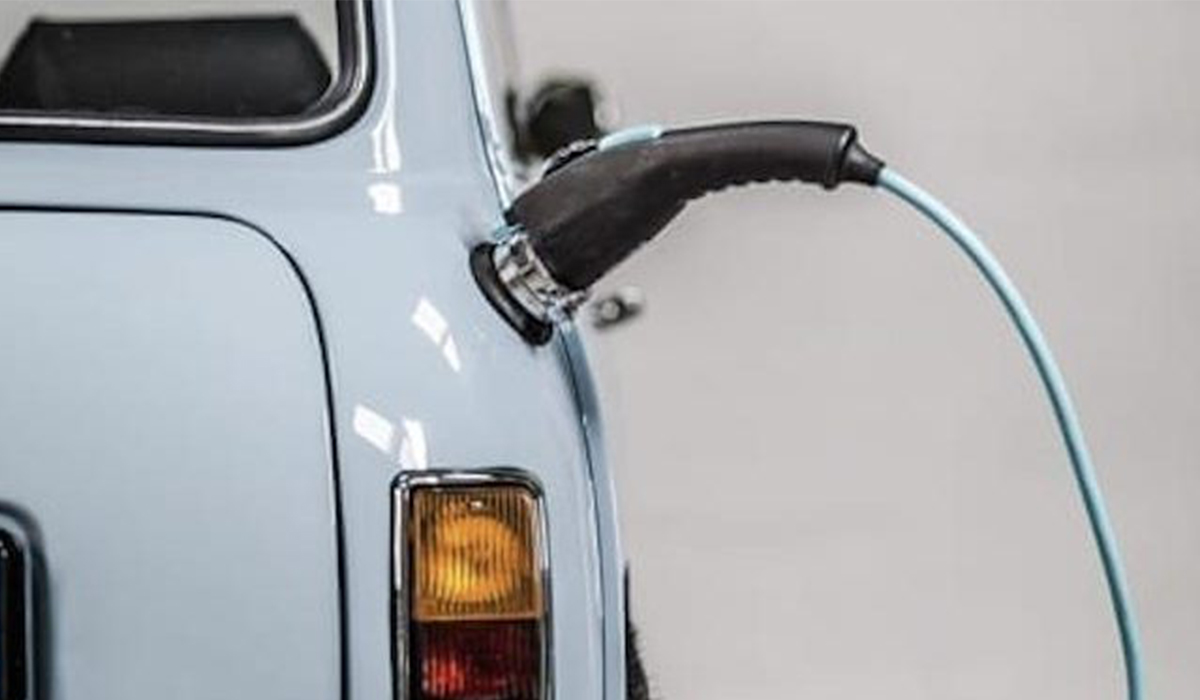
The new law officially allows the retrofitting of cars to convert a car with a combustion engine into an electric vehicle. Compared to a new purchase, retrofitting is an economic and sustainable alternative that allows the upcycle of existing vehicles by giving them a second life, while helping to reduce CO2 emissions as part of the electric car transition.
The process could indeed accelerate the global electric conversion of the vehicle population by adding a complementary solution to the expanding production of new EVs. Retrofitted cars have a lower autonomy than new electric vehicles but could be more affordable as the technology is developing and while governments create incentives to promote this new process. In France, citizens who wish to transform their cars could benefit from a subsidy of up to 5,000 euros from the state.
Compact conversion: The French startup TransitionOne aims at converting small city cars like the Renault Clio or the Citroën C1, which are popular and affordable models. Prices could start at 5,000 euros for a basic conversion, depending on the government subsidy, with a process that could take less than one day to complete. The company is currently waiting for regulatory approval and hopes to build a factory that could retrofit thousands of vehicles every year.
Magic bus: Retrofitting is not just a process that can be used for individual cars: in Germany, several companies are also converting buses to electric drive. e-troFit, a subsidiary of the development company in-tech, is building conversion kits that can be adapted to the customers’ requirements. The company has recently signed a long-term contract with Voltabox AG to supply high-performance lithium-ion battery systems which are precisely tailored to the needs of the conversion process.
The Voltabox battery system, which is designed to be mounted at the rear or on the roof structure of the vehicles, allows buses to reach distances of up to 260 km but could be scaled for longer ranges. This could prove to be an economic and sustainable solution for cities which need to reduce their CO2 emissions: according to e-troFit, the conversion can cost between 300,000 and 350,000 euros per bus, depending on the condition of the vehicle — half the cost of brand new electric buses.
India rising: Retrofitting conversions have already been in the works for several years in India. Created in 2016, E-trio was the country’s first certified EV retrofitting startup. Its founder Sathya Yalamanchili was inspired by China’s growing number of EVs to accelerate electric mobility in India, while also tackling the price problems by focusing on transforming existing models.
Another company, Folks Motor, which calls itself India’s first hybrid-electric retrofit car company, is slated to do a brand launch and unveil its products this year. Folks Motor has developed a technology called Hybrid ReGen Drive to turn any manual gearbox ICE (international combustion engine) into a hybrid — saving around 25 to 30% of fuel for a regular petrol hatchback car. The company plans to launch five OEM (original equipment manufacturer) retrofitted models before expanding to include as many as 20 different models. The vehicles, as well as the hybrid-electric retrofit kits which could also be sold separately, will come with a warranty of two years and 50,000 km.
So vintage: In many countries, the process of retrofitting was first applied to a particular branch of vehicles: older classic cars. Toronto-based entrepreneur Davinder Singh created Epic Car Conversions, a company that transforms high-end vintage cars such as Porsches and Jaguars into 100% electric vehicles. The conversion takes about two months and costs between $25,000 to $85,000 depending on the level of customization. It includes the removal of all combustion components from the exhaust to the engine which are replaced by a simplified custom electric drive unit. Singh is now promoting this unit for use in vehicle fleets such as company cars and buses in other countries around the world.
Do it yourself: Before electric vehicles were sold to the general public, some people would just create their own by converting their internal combustion engine to run on electricity. In other words, DIY retrofit is possible if you have the mechanical skills, financial resources and some time on your hands. You’ll first need to find a “donor car,” preferably a small and light vehicle, which will offer a longer range on a charge, before stripping it of all its ICE-related hardware. This will be replaced with many components, including the electric motor and a battery pack — the size of which will vary depending on the space available and the performance needed. It is estimated that a basic conversion can cost around $8,000 and up to $20,000 when buying a conversion kit.